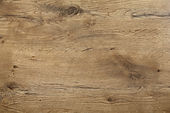

Why Bees?
When most people think about bees they only think about the beloved honeybee (Apis malliefra), because of her great role in our planet, her hard working nature, and her delicious honey. But little do they know that there are over 20,000 species of bees worldwide, better known as native bees. This unfortunate lack of fame has resulted in them being overlooked when people set out to "save the bees”. Native bees are among the most diverse and crucial insects in our ecosystem. They pollinate a large part of all crops, making them absolutely essential to humanity's well being! However many native bee species have experienced drastic population declines due largely from destruction or pesticides that target their natural habitats. Global warming is another prominent cause for death in bees, as well as relocation. When their habitat is no longer suitable the remaining few will venture out in search of a new home, a journey which many don’t survive. The intricate and complex society of bees is something we can't fully appreciate until it's gone. Native bee populations have been shrinking for years, but the most recent studies show that globally about 1 in every 6 species are regionally extinct--and more than 40% at risk to become so in the near future! These little ones don’t ask for much, as many of them are solitary, meaning they don’t live in large groups, they nest underground or inside cavities; and many only need one plant for sustenance.
Here at Oursabeille our mission is help raise awareness for the species in this planet that have no voice. we want the world to know how truly simple it is to make a change, as cliche as that sounds. there are hundreds of ways to help stop the decrease of native bee population. Such as taking literally any action against global warming, planting some flowers and promoting biodiversity in suburban gardens, even setting out native bee habitats in your back yard. One small action multiplied by many has the power to do anything. Beehives sure know how that works, and eventually so can we.



